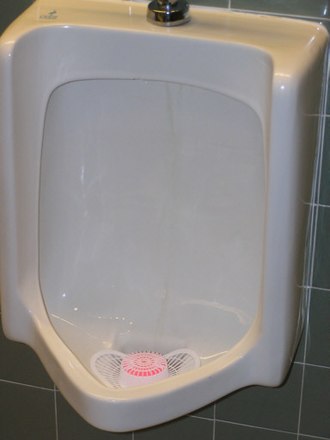Urinal deodorizer block
Urinal Deodorizer Block
A urinal deodorizer block, commonly known as a urinal cake, is a small disinfectant block placed in urinals to reduce or mask odors from restroom use. These blocks are often made of a variety of chemicals that help to neutralize odors and provide a pleasant scent.
Composition
Urinal deodorizer blocks are typically composed of paradichlorobenzene, naphthalene, or other chemicals that sublimate, meaning they transition from a solid to a gas without becoming liquid. This sublimation process helps to release a continuous fragrance that masks unpleasant odors. Some modern urinal blocks are made from more environmentally friendly materials, such as biodegradable substances.
Function
The primary function of urinal deodorizer blocks is to control odor in public restrooms. They are placed in the urinal bowl, where they slowly dissolve over time, releasing a fragrance that helps to mask the smell of urine. In addition to odor control, some urinal blocks also contain enzymes or bacteria that help to break down organic matter, reducing the buildup of uric acid and other deposits in the plumbing.
Variants
There are several types of urinal deodorizer blocks available, including:
- Traditional blocks: Made from paradichlorobenzene or naphthalene, these are the most common type of urinal blocks.
- Enzyme blocks: Contain enzymes that help to break down organic matter and reduce buildup in pipes.
- Eco-friendly blocks: Made from biodegradable materials and free from harmful chemicals.
Waterless Urinals
In waterless urinals, urinal deodorizer blocks are often used to maintain hygiene and odor control without the use of water. These urinals rely on a special trap or sealant liquid to prevent odors from escaping, and the blocks provide additional fragrance.
Health and Safety
While urinal deodorizer blocks are effective at controlling odors, some of the chemicals used in traditional blocks, such as paradichlorobenzene, can be harmful if inhaled in large quantities. It is important to ensure proper ventilation in restrooms where these blocks are used. Eco-friendly alternatives are available for those concerned about the environmental and health impacts of traditional blocks.
Related Pages
References
Transform your life with W8MD's budget GLP-1 injections from $125.
W8MD offers a medical weight loss program to lose weight in Philadelphia. Our physician-supervised medical weight loss provides:
- Most insurances accepted or discounted self-pay rates. We will obtain insurance prior authorizations if needed.
- Generic GLP1 weight loss injections from $125 for the starting dose.
- Also offer prescription weight loss medications including Phentermine, Qsymia, Diethylpropion, Contrave etc.
NYC weight loss doctor appointments
Start your NYC weight loss journey today at our NYC medical weight loss and Philadelphia medical weight loss clinics.
- Call 718-946-5500 to lose weight in NYC or for medical weight loss in Philadelphia 215-676-2334.
- Tags:NYC medical weight loss, Philadelphia lose weight Zepbound NYC, Budget GLP1 weight loss injections, Wegovy Philadelphia, Wegovy NYC, Philadelphia medical weight loss, Brookly weight loss and Wegovy NYC
|
WikiMD's Wellness Encyclopedia |
| Let Food Be Thy Medicine Medicine Thy Food - Hippocrates |
Medical Disclaimer: WikiMD is not a substitute for professional medical advice. The information on WikiMD is provided as an information resource only, may be incorrect, outdated or misleading, and is not to be used or relied on for any diagnostic or treatment purposes. Please consult your health care provider before making any healthcare decisions or for guidance about a specific medical condition. WikiMD expressly disclaims responsibility, and shall have no liability, for any damages, loss, injury, or liability whatsoever suffered as a result of your reliance on the information contained in this site. By visiting this site you agree to the foregoing terms and conditions, which may from time to time be changed or supplemented by WikiMD. If you do not agree to the foregoing terms and conditions, you should not enter or use this site. See full disclaimer.
Credits:Most images are courtesy of Wikimedia commons, and templates, categories Wikipedia, licensed under CC BY SA or similar.
Contributors: Prab R. Tumpati, MD






